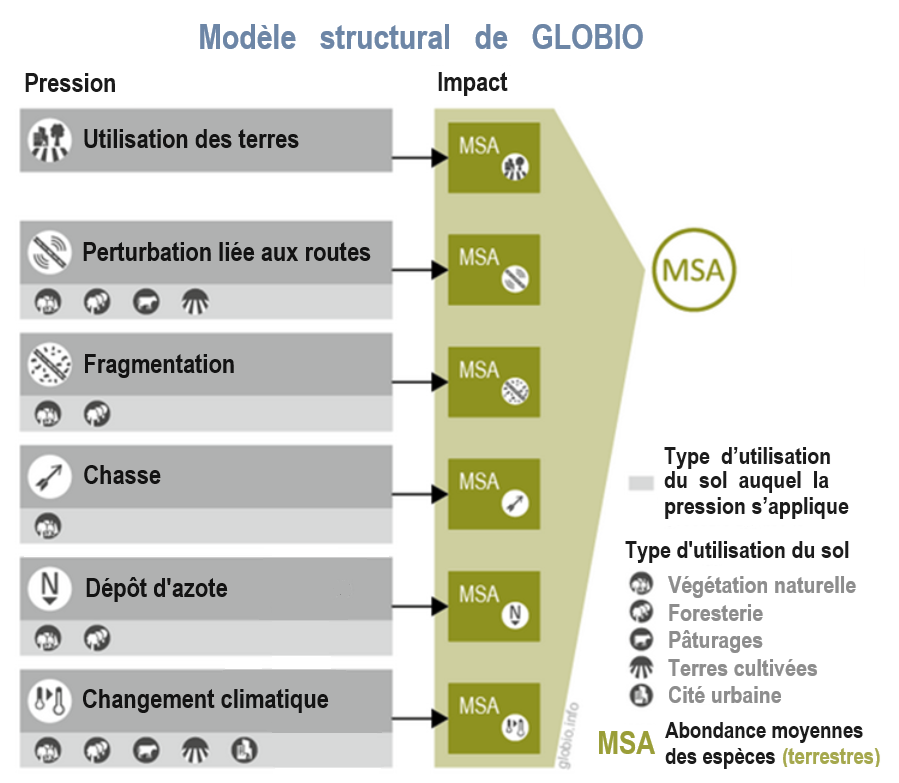GLOBIO
Glossaries
| Term | Definition |
|---|---|
| GLOBIO | ♦ Le cœur du modèle GLOBIO consiste en un ensemble de relations quantitatives qui décrivent comment la biodiversité, exprimée en abondance moyenne des espèces (MSA), répond aux pressions environnementales anthropiques. MSA représente l'abondance moyenne des espèces originales par rapport à une pression particulière par rapport à l'abondance moyenne dans une situation de référence non perturbée. Les pressions incluses dans le modèle GLOBIO sont le changement climatique, les dépôts atmosphériques d'azote, l'utilisation des terres, les infrastructures et l'empiétement humain. Par pression, plusieurs cheminements de cause à effet sont possibles. Par exemple, les infrastructures peuvent affecter la MSA via la fragmentation de l’habitat (effet barrière), mais aussi parce que la proximité des infrastructures perturbe l’habitat naturel environnant restant (effet de lisière). Au total, six impacts sont distingués, chacun quantifié en termes de MSA :
♦ Site internet : https://www.globio.info/ |



